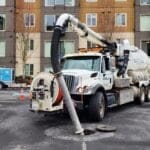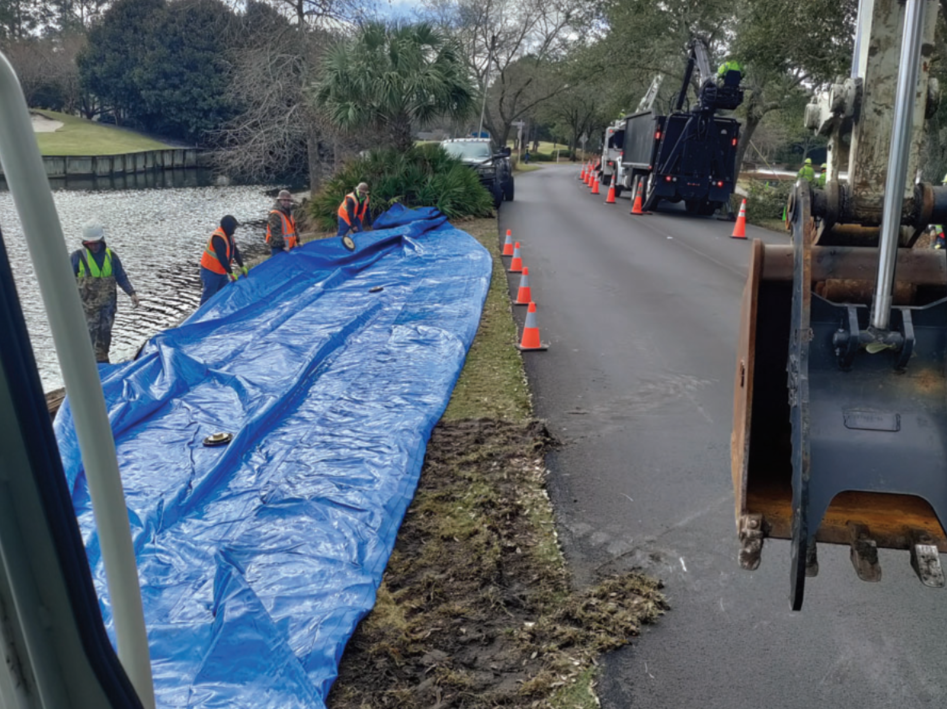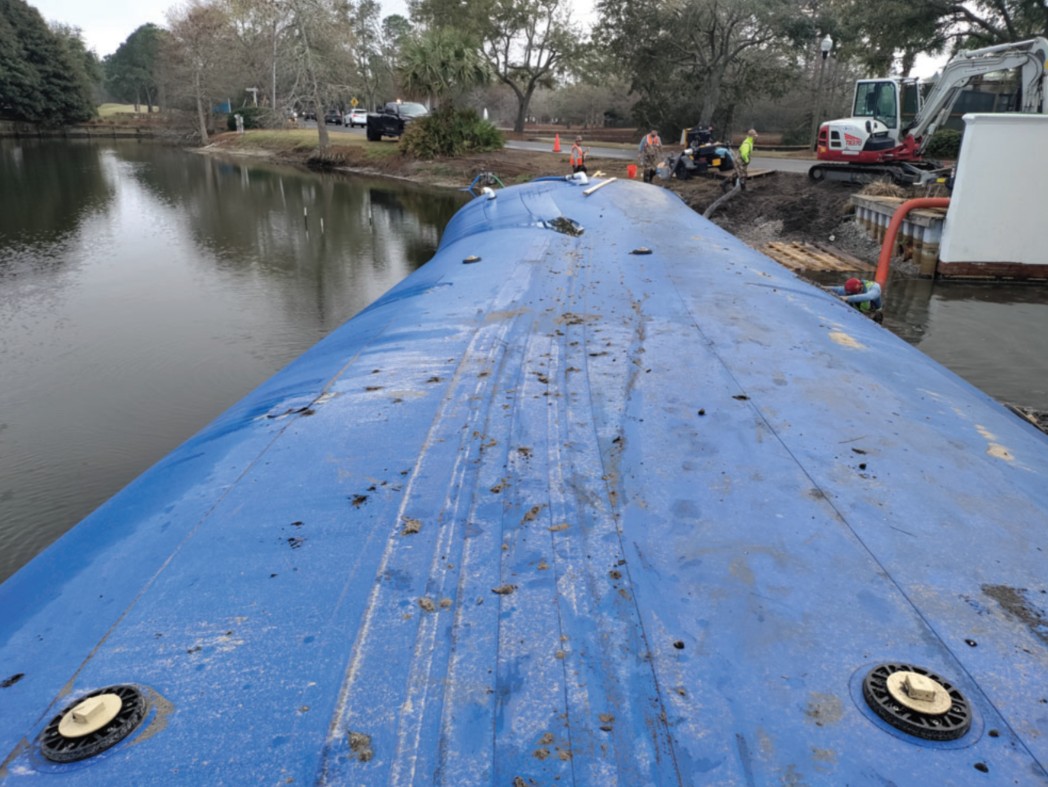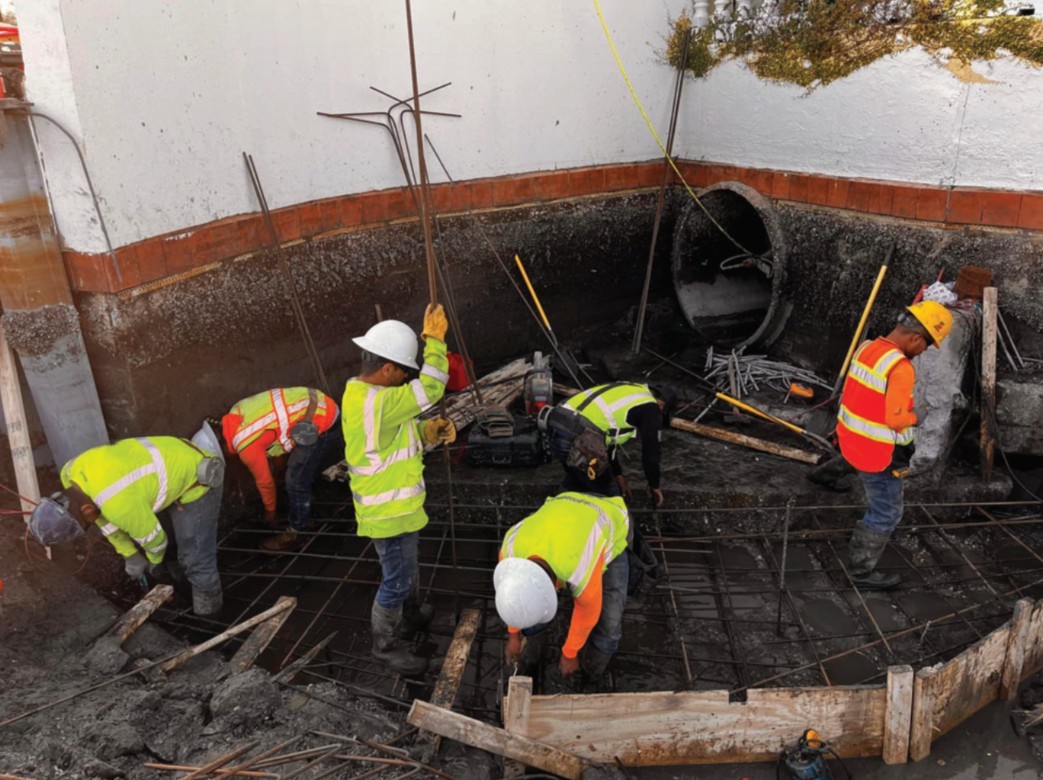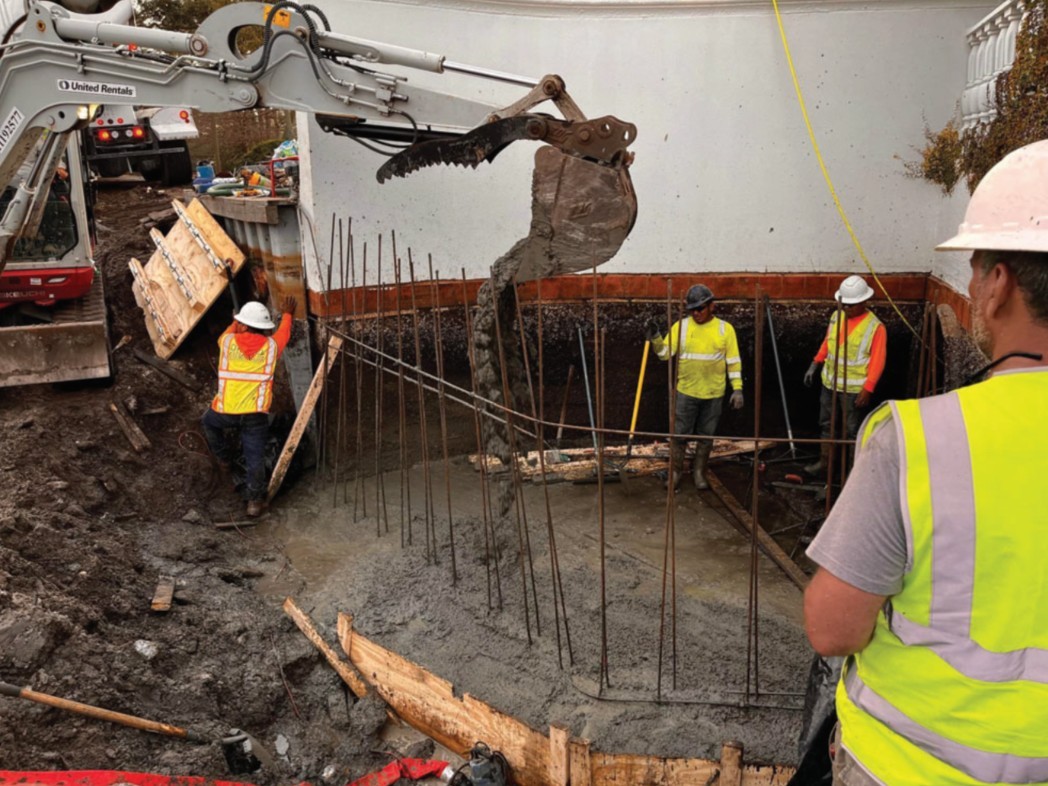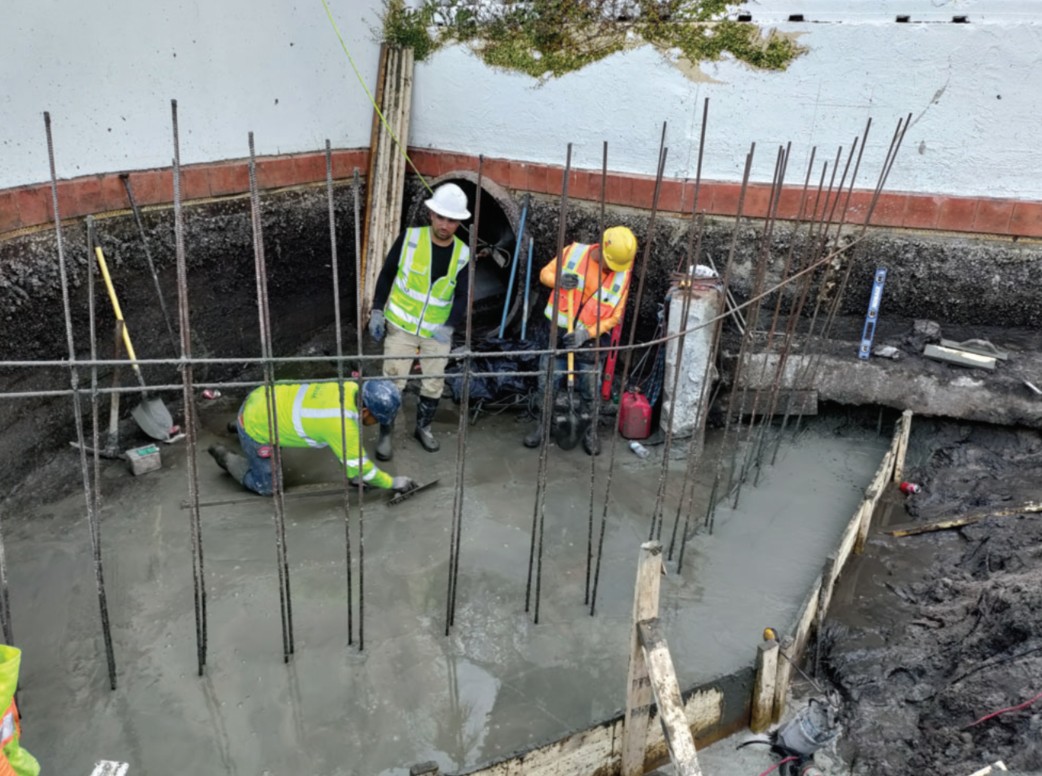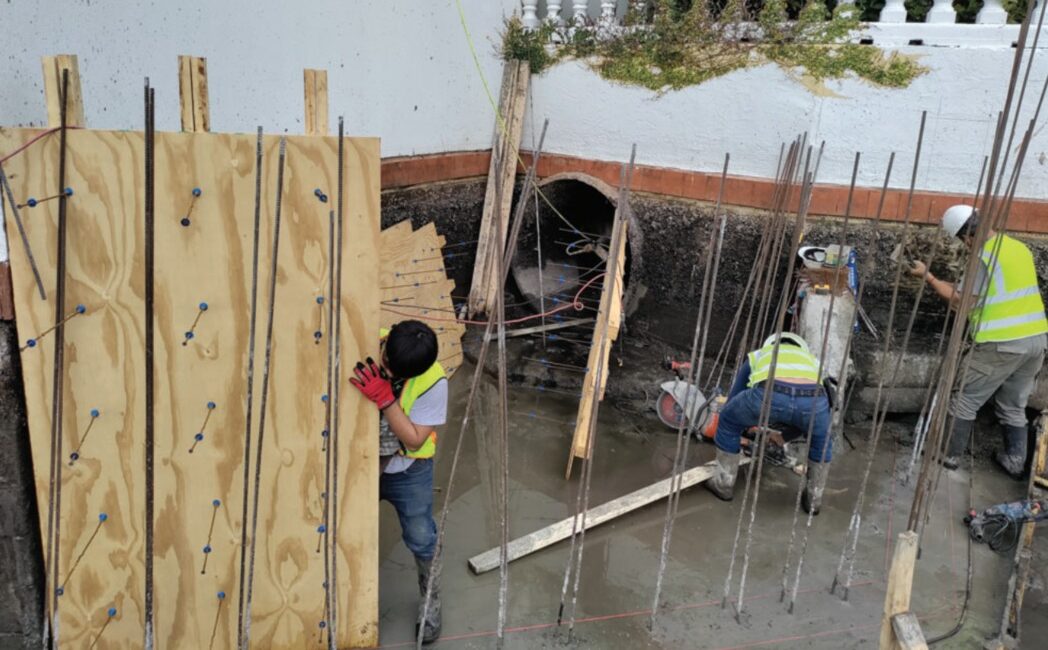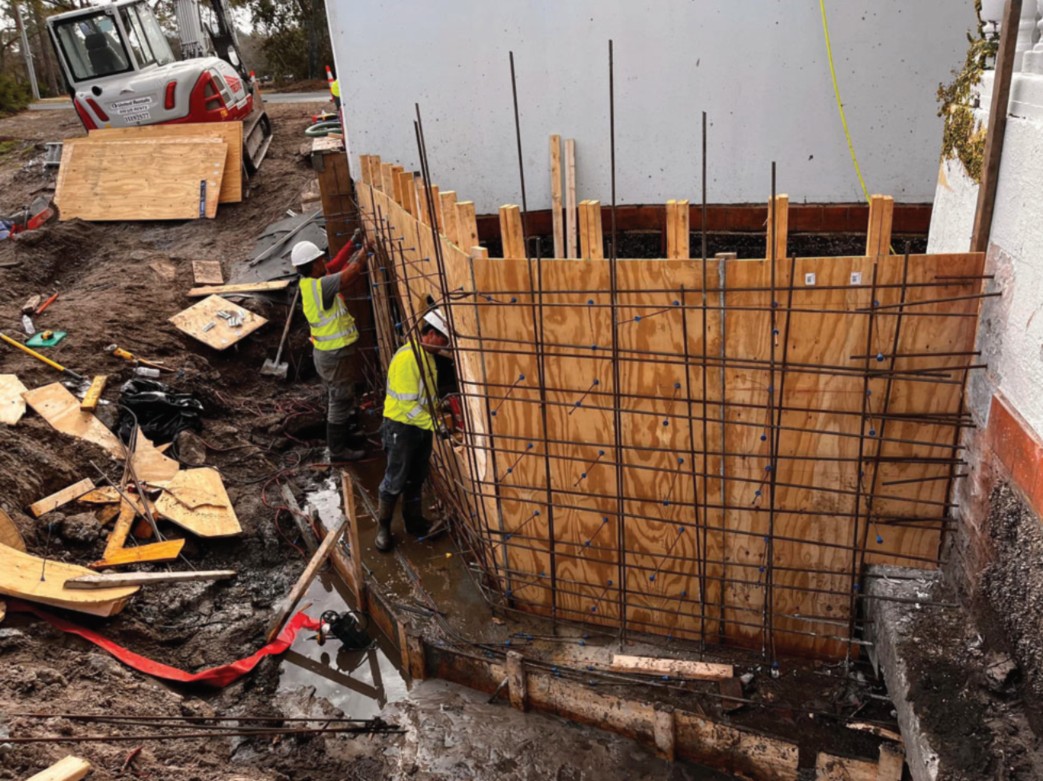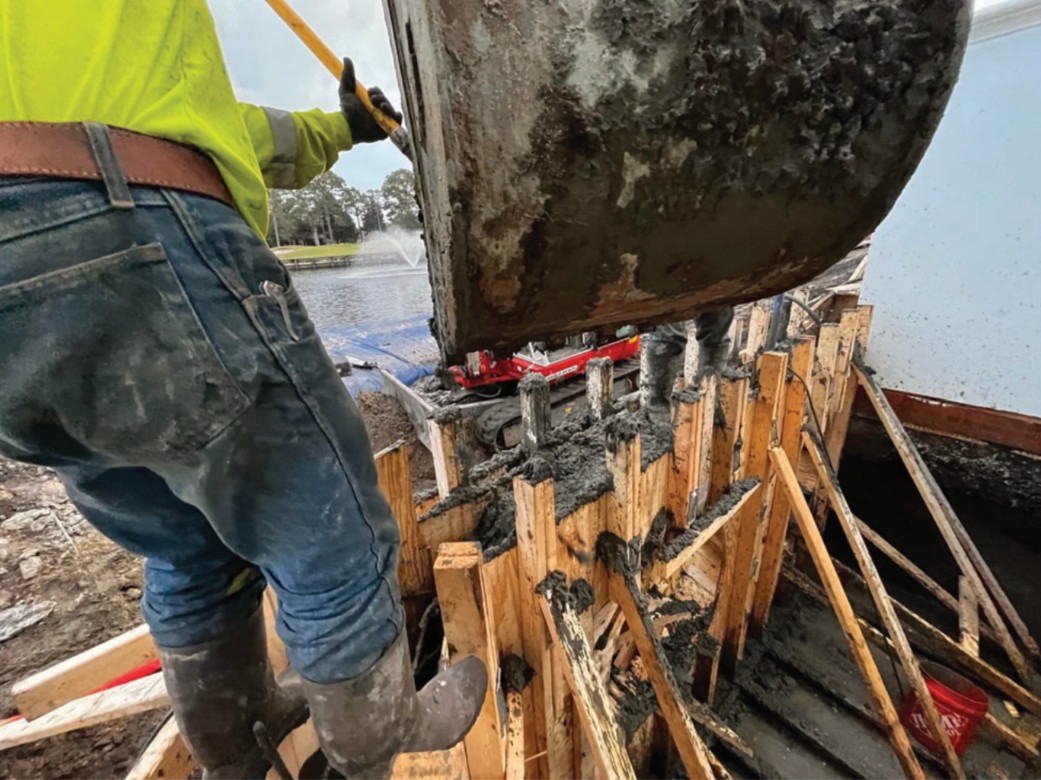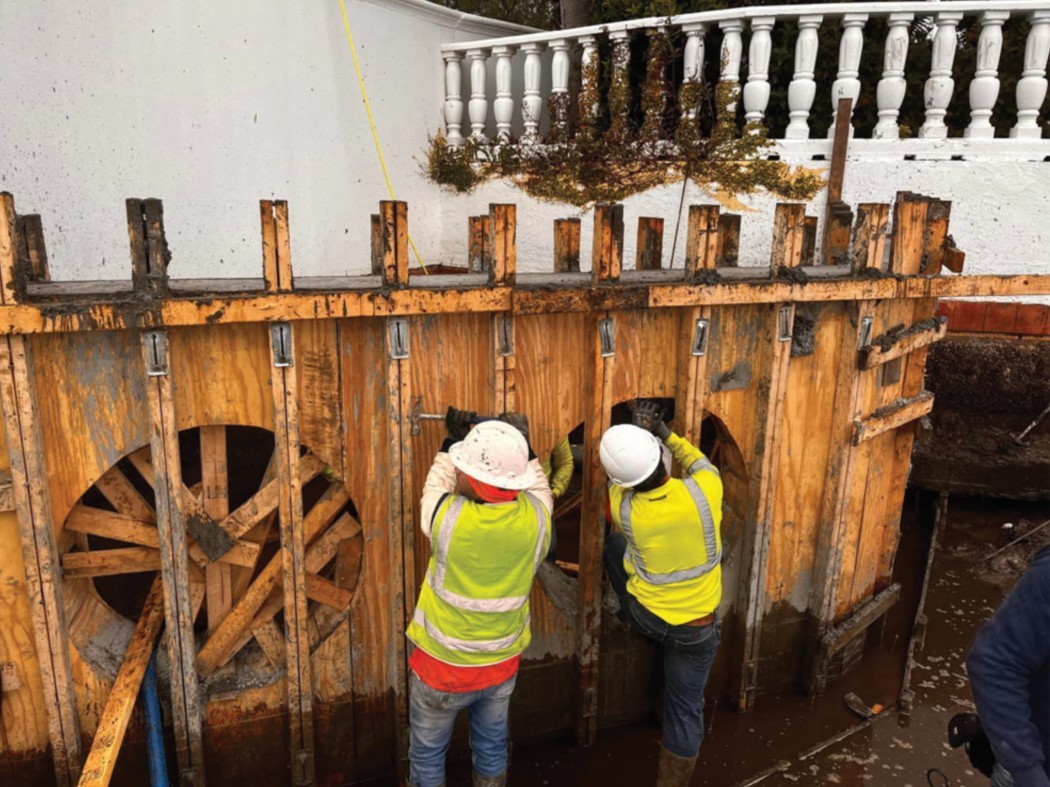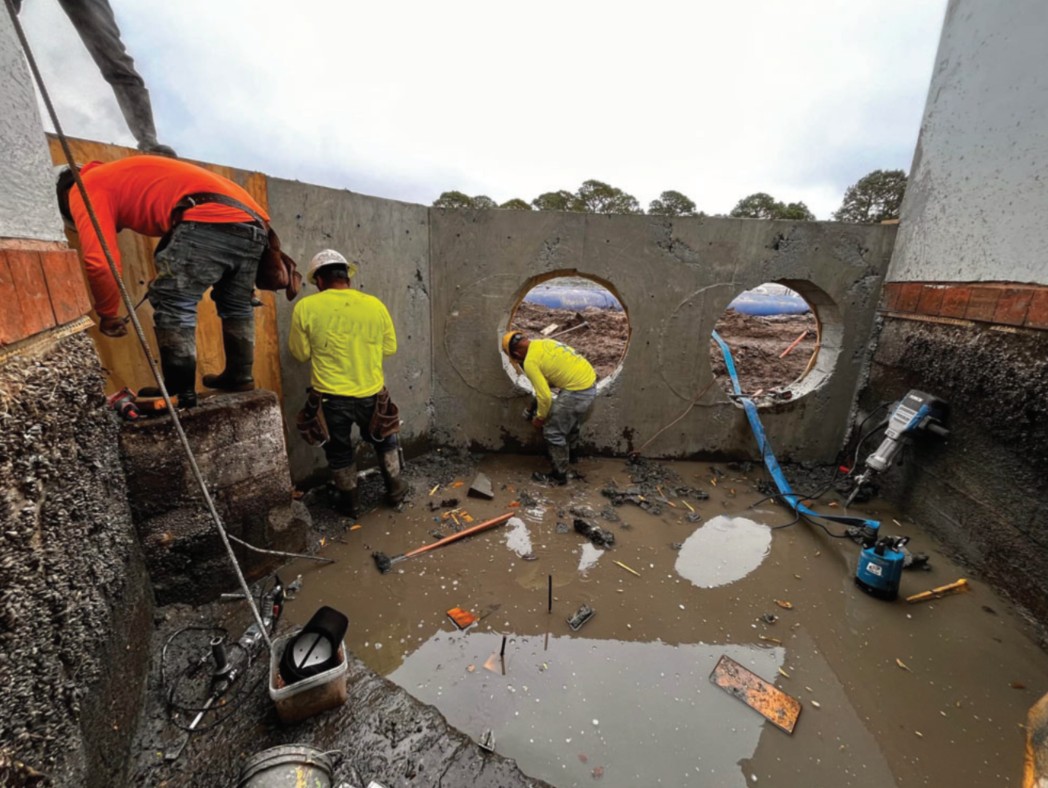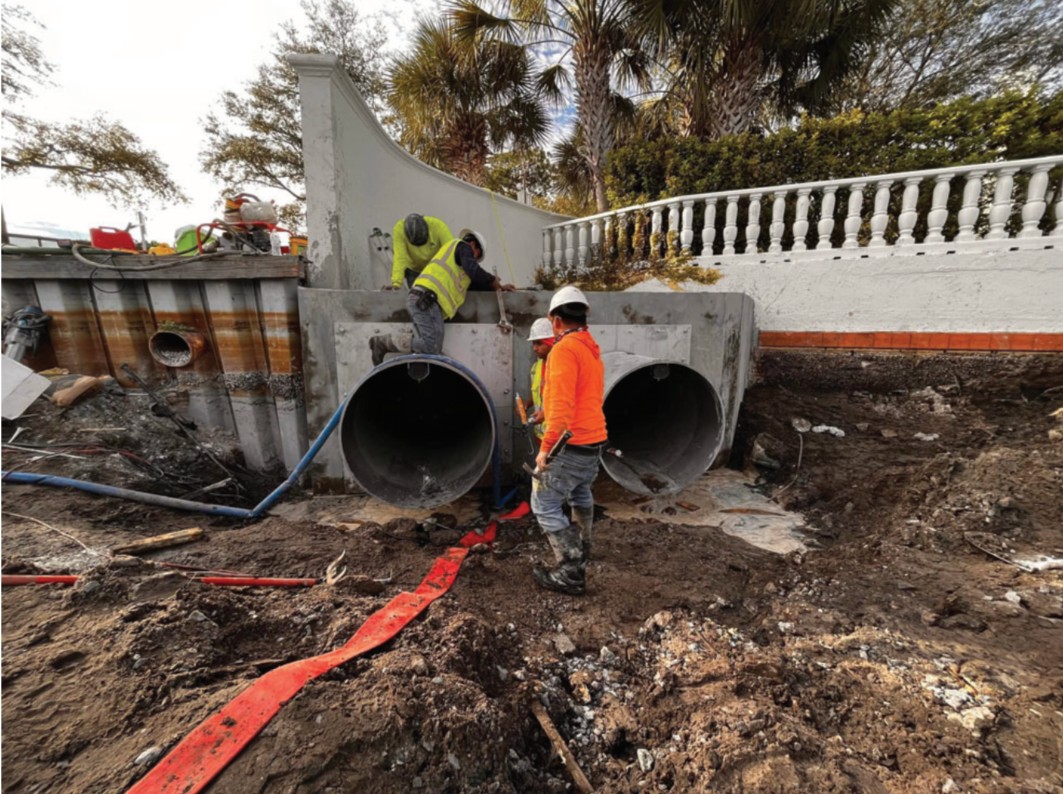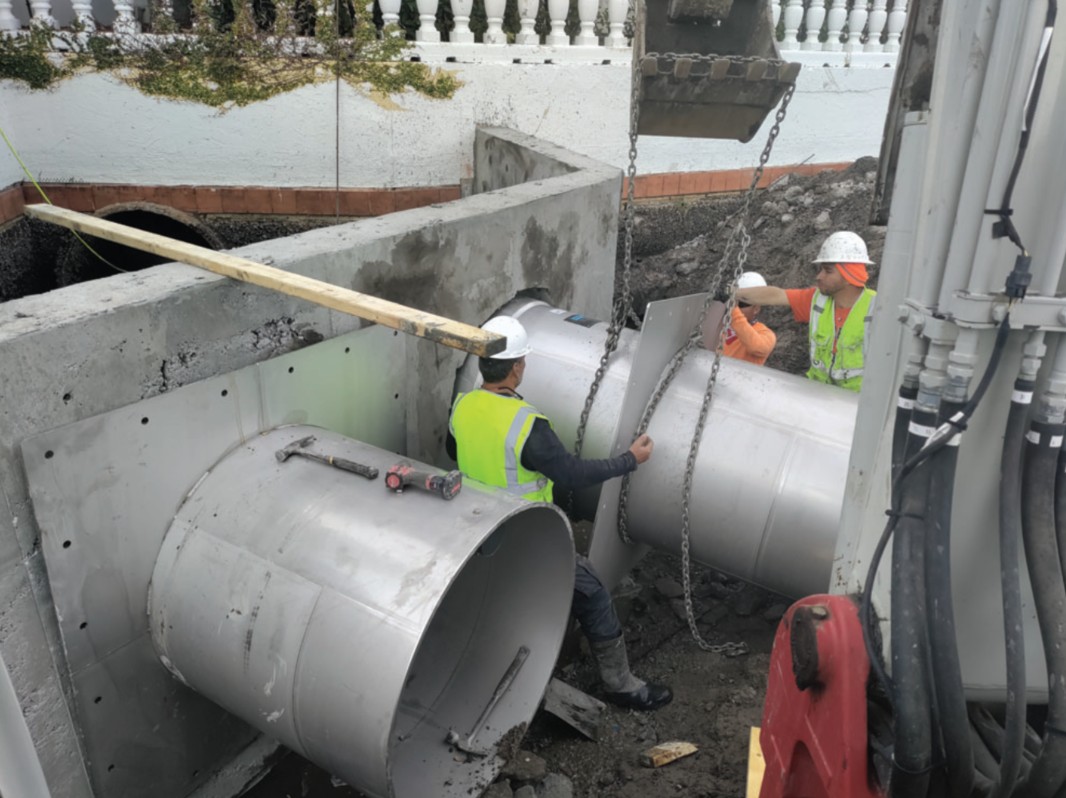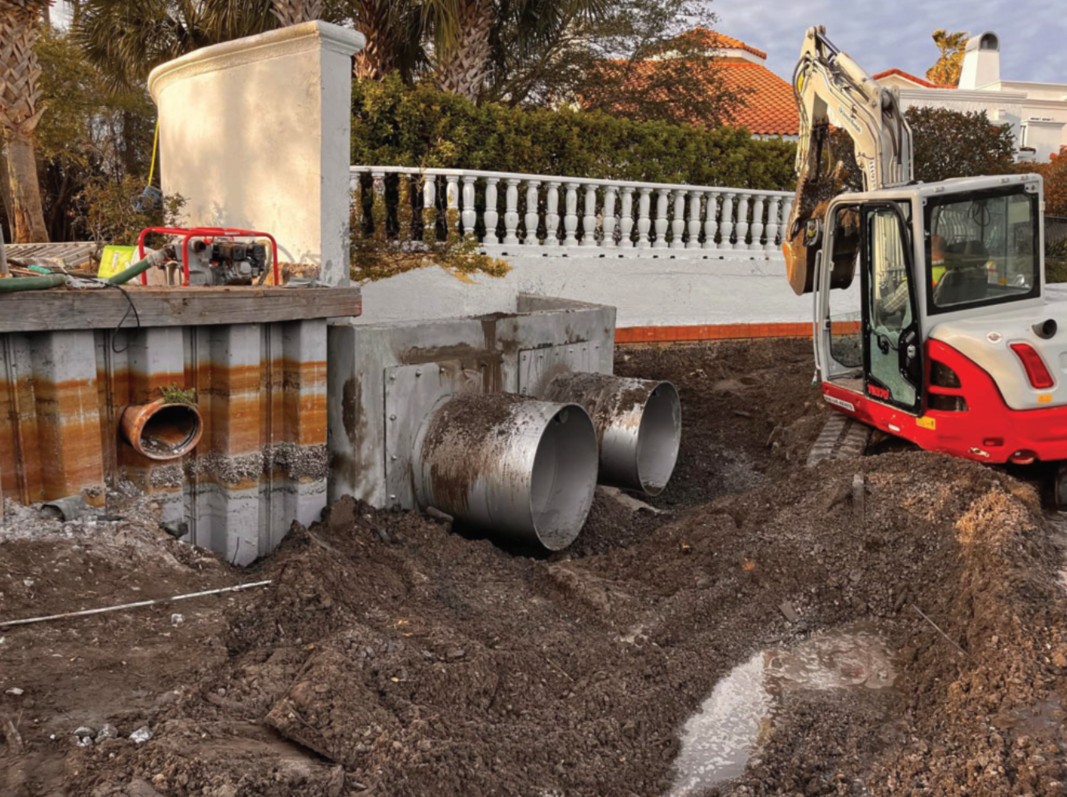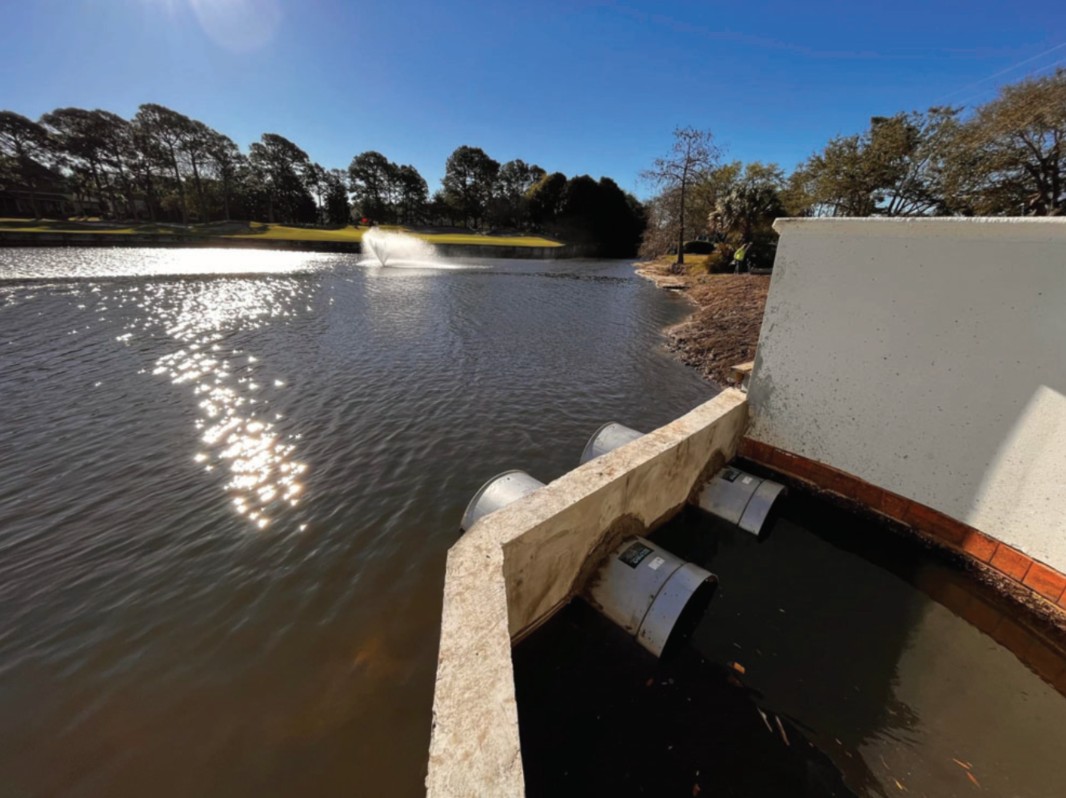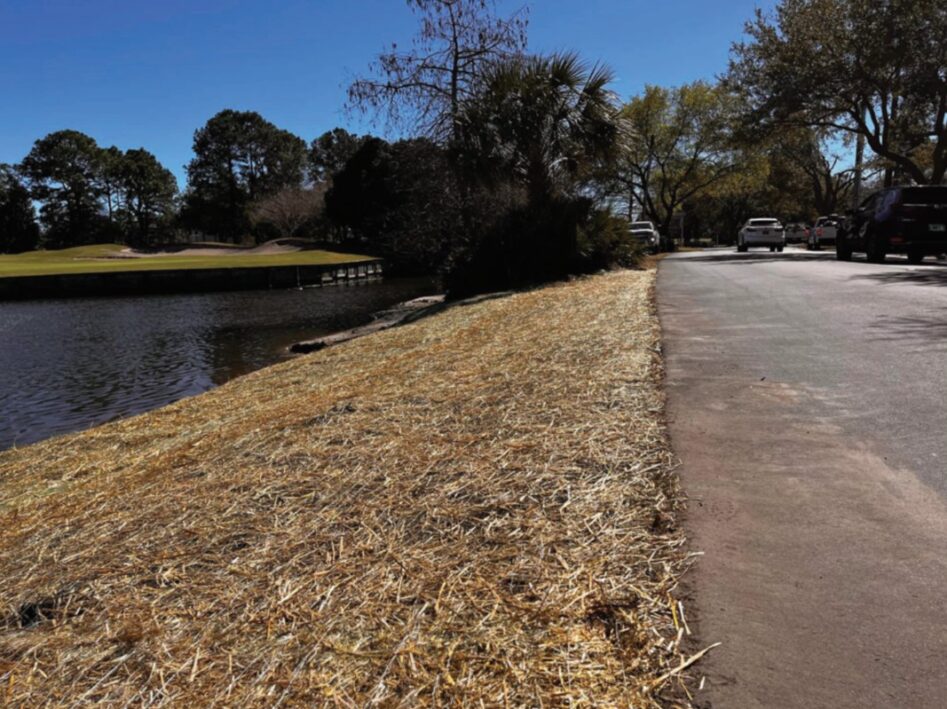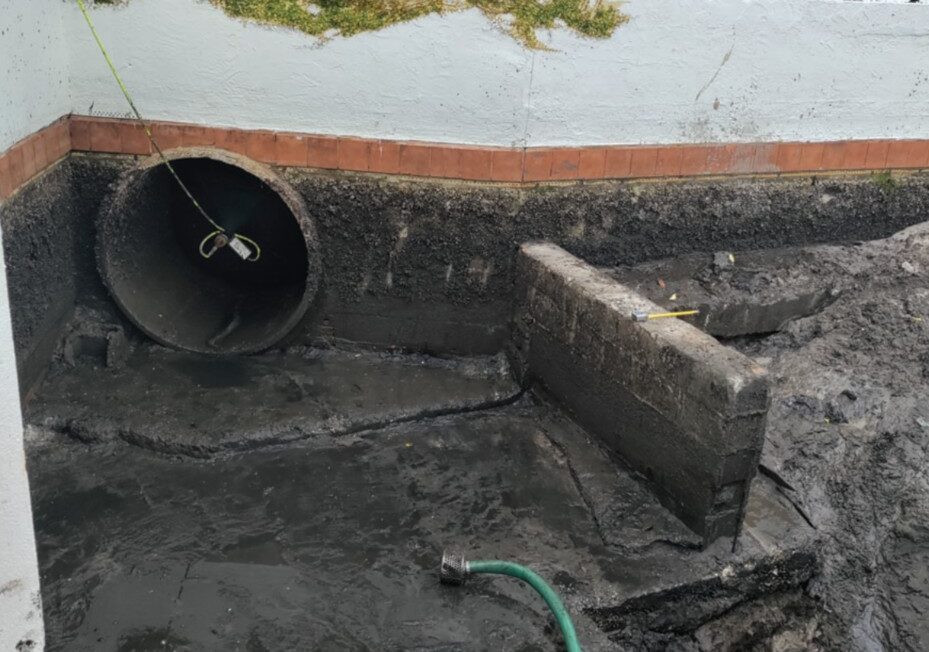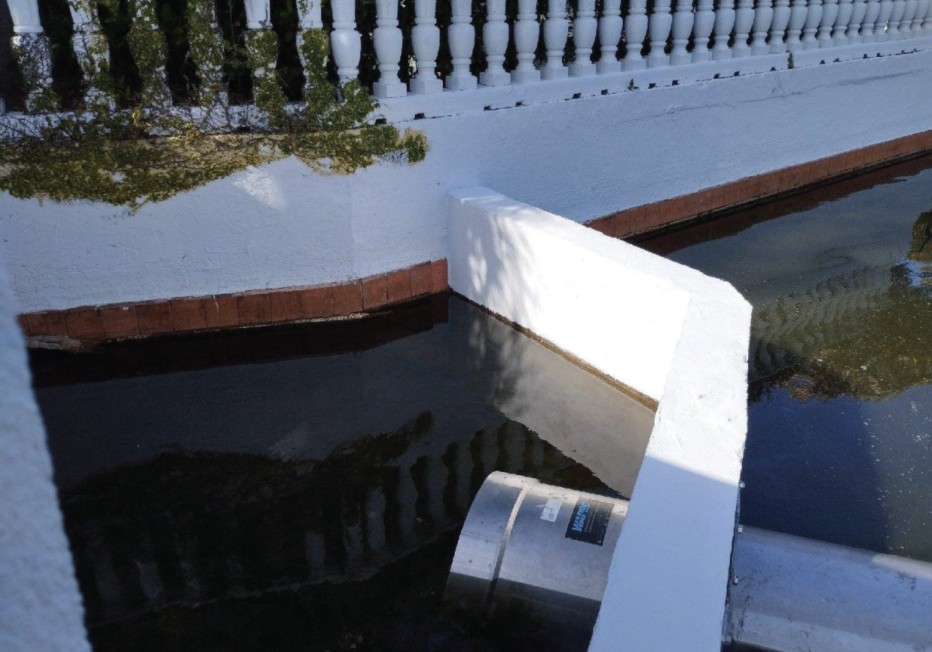Destin, Fla. Tidal Flooding Prevention
Destin, Fla. |
HOA |
Stormwater Repairs & Rehabilitations
Overview:
A coastal property experiencing frequent flooding due to high tides and heavy rainfall had an aging outlet control structure that no longer functioned properly. AQUALIS collaborated with engineers to design and install a reinforced concrete weir wall, new footer and check valves to strengthen the system and prevent tidal backflow.
Problem:
This coastal property was surrounded by water, with the Choctawhatchee Bay on one side and several smaller lagoons throughout the site. Tides from the Atlantic Ocean caused fluctuating water levels within the bay and lagoons. When high tides coincided with heavy rainfall, the existing outlet control structure was often overwhelmed, resulting in flooding across the property.
The property owners were in the process of retrofitting their stormwater system to replace aging infrastructure. Before construction could begin, it was necessary to verify the existing conditions. During the consultation phase, AQUALIS representatives walked the area of concern with property managers while reviewing the design plans. It was discovered that the current site conditions did not match the original construction drawings. This type of discrepancy is a relatively common occurrence when engineers and contractors do not coordinate closely. At this site, the outlet structure walls extended further than shown in the plans, the concrete base had different dimensions and lacked reinforcement and an undocumented wall was present in front of the outfall. The concrete base was also deteriorating rapidly.
Understanding the true conditions of the site was essential in developing an effective plan to repair the infrastructure and reduce flooding. Working with a third-party engineering firm, AQUALIS stormwater experts designed a stronger approach to reinforcing the outlet control structure. The solution involved the installation of a reinforced concrete weir wall, a new concrete footer and two check valves to prevent tidal backflow.

Before

After
Solution:
The first step was to dewater the area. Connected pipelines were plugged, and a temporary bypass system was established. A bladder plug was placed to contain the water in the lagoon, allowing access to the wall. During the dewatering process, significant erosion and structural weaknesses in the wall were observed, confirming the need for additional reinforcement. The team excavated the area to the subgrade, removing the old footings and the small wall in preparation for the retrofit. A reinforced concrete footing was then poured to withstand the hydraulic forces caused by tidal fluctuations.
Once the footing was in place, a wooden form and rebar cage were constructed to shape the new concrete wall. The design incorporated recesses for the check valves and connected securely to the existing wall with additional reinforcements. Check valves were chosen because they allow water to flow away from the property while preventing backflow. After the wall cured and passed watertight testing, the valves were installed.
When the wall and valves were fully functional, the bypass system and pipeline plugs were removed, restoring normal flow. The upgraded outlet control structure now regulates tidal discharge, prevents lagoon backflow and protects the property from flooding during extreme tide and rain events. The use of reinforced materials and an updated design improved the reliability of the infrastructure, ensuring long-term protection for the property.
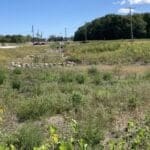 Kenosha, Wis. Highway KR Regenerative Stormwater ConveyanceThe Root-Pike Watershed Initiative Network Kenosha County, and others worked with AQUALIS to design and implement an innovative solution for stormwater control along Highway KR.
Kenosha, Wis. Highway KR Regenerative Stormwater ConveyanceThe Root-Pike Watershed Initiative Network Kenosha County, and others worked with AQUALIS to design and implement an innovative solution for stormwater control along Highway KR.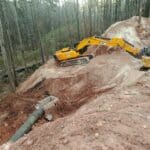 Durham, N.C. Sinkhole Leads to Stormwater System RehabilitationThe tenant on this property noticed a depression that opened to the ground below and notified the property owners.
Durham, N.C. Sinkhole Leads to Stormwater System RehabilitationThe tenant on this property noticed a depression that opened to the ground below and notified the property owners.